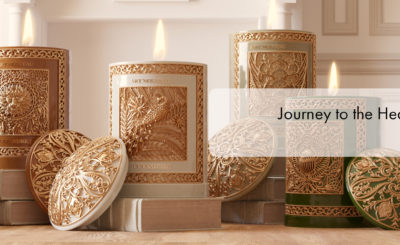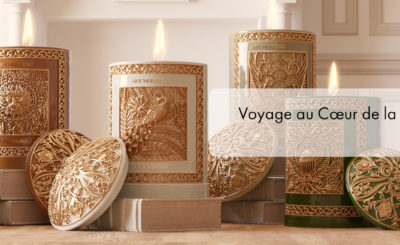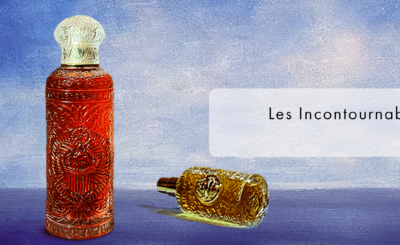Alexandre J is inspired by his surroundings and all its captivating factors, which is why traveling is simply essential to him as a designer and artist. This time, we’re tagging along and tour the world with this series called “Globe Trotting Senses” and our first stop: Asia!
A continent of color and spice, the scent of Asia had always been tied to tradition and rituals, incense being one of the most common occurrences as soon as you step in. This region is abundant with powerful notes with vast resources and land to grow spices and cultivate minerals. The air is dancing with the scent of fruits ripe for the picking and flowers lingering gloriously. Even Asian cuisine has a distinctive smell: cumin, turmeric, coriander and more!
Asia’s take on Perfumery
Perhaps it is since the territory is overwhelmed with raw materials and flavors that they take a relatively relaxed approached towards perfumery. Asians are not as keen with fragrances as compared to westerners. In some countries, there are men who have never even worn a perfume in his life, and women often consider the use of perfume as strictly for special occasions and therefore is commonly given or received as a gift. The cultural difference plays a huge part in this; where perfume is deeply rooted in the European culture, some parts of Asia put respect for others above all, and that includes not disturbing others with your scent of the day!
The west still tops the east over perfume consumption, but the numbers have been growing gradually, especially with the younger generation’s flair for fashion and trend. With this continent’s size, we won’t be surprised if the tables are turned one day soon. Let’s look at some of the most iconic raw materials from this region.
Sandalwood
For over a millenia, sandalwood has been a vital part of many rites and traditions, especially in Hindu and Buddhist cults. The wood and roots are distilled to extract the essence. The scent is warm, woody, waxy, and smoky making it sensual and velvety. Sandalwood boosts the overall olfactory power of a perfume and is often found at the heart or base. Although sandalwood is originally found in Australia, Sri Lanka and Indonesia are exclusively home to white sandalwood.
Sakura
We all know where those anime drawings and beautiful scenic photos come from when you see picturesque cherry blossoms all around. Sakura has become such an emblem of Japan that they celebrate it in the spring, specifically in the first week of April every year and tourists from different parts of the globe flock to the country to witness the magical event of the Hunami festivals as the cherry trees shower the landscape with shades of red, pink, and white. Aside from its beauty and symbolism, cherry blossoms give off a very sweet and feminine scent that is adored by the Japanese women.
Tonkin Musk
Musk is of animal origin and comes from the secretion of a musk buckshot gland, among the most well-known was that of Tonkin – a species that come predominantly from Asia and more specifically live in the heights of the plains in Vietnam. Hoa Lu was recognized as the capital of Tonkin musk and their people used the extracts in rituals and virtues. The animalistic scent has crossed borders and has become a leading ingredient in perfumery because of its tenacity. The Tonkin species is now endangered and thankfully protected, but musk is still being reproduced thanks to synthesis.
Ylang-Ylang
Ylang-ylang was first distilled in Manila, Philippines around 1860 and was gradually introduced to the Pacific islands. A flower native to Southeast Asia, Filipinos has found multiple uses for it such as the boori-boori. It’s an ointment made out of mixing ylang-ylang with coconut oil. The mixture is applied to the body in the rainy season as protection against infection and diseases. Today, we find this wonderful flower in several fragrances, and it is commonly used to protect the hair and skin from sunlight and salt.
There’s plenty more to tell, but we’ll end our Asian tour right here. Buckle up for our next olfactory destination: Africa.






